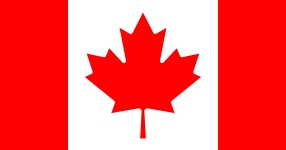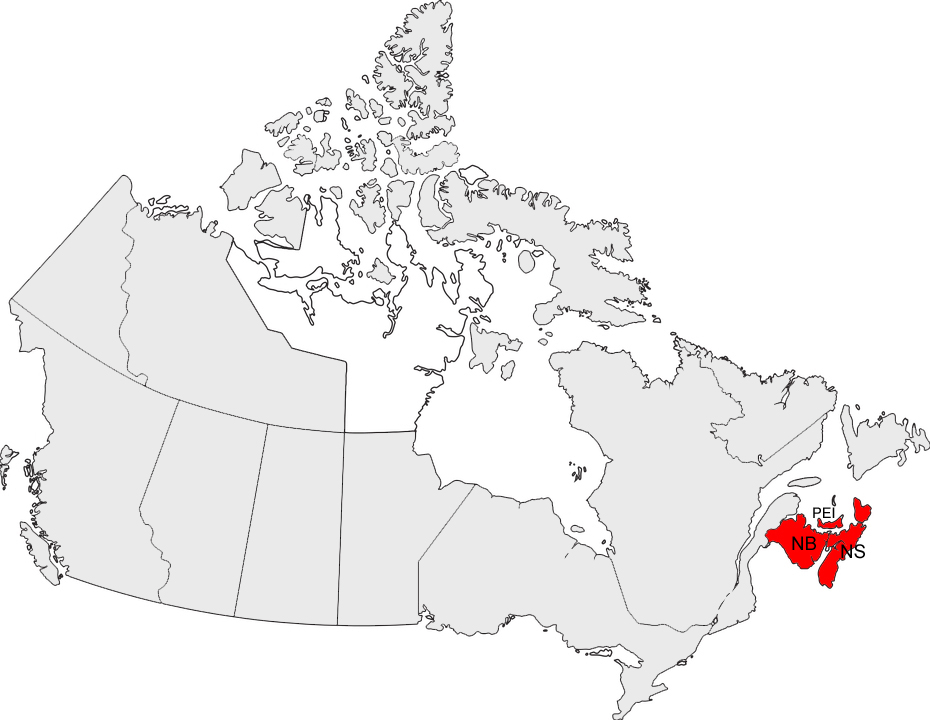Nova Scotia • New Brunswick • Prince Edward Island

The Maritimes – Canada’s smallest provinces
Three small provinces in eastern Canada are called the Maritimes: Nova Scotia, New Brunswick and Prince Edward Island. Together with Newfoundland and Labrador, they are also called Atlantic Provinces due to their geographical location.
Our journey begins in Halifax, the largest city in the Maritimes; you should allow at least one day for your visit. We leave the area along the south coast; first destination is Taylor Head Provincial Park, where we walk an interesting hiking trail. At Sherbrooke we turn north and reach the bridge to Cape Breton Island. In Baddeck we visit the Alexander Graham Bell National Historic Museum; the exhibition vividly explains how Bell invented the telephone.
Then it’s time for the Cabot Trail, one of Canada’s most famous routes. The road with a length of approximately 300 kilometers winds along the coast of Cape Breton once around the island. Chéticamp is the western entrance to Cape Breton Highlands National Park, a hiker’s paradise. Most famous is the Skyline Trail, a premium hiking trail of about 10 kilometers. Halfway up there is a boardwalk with more than 250 steps and a magnificent view of the Atlantic.
Cabots Landing Provincial Park at the northern end of the island is the place where explorer John Cabot is said to have landed in 1497. On the way back on the east coast, you should definitely have a coffee at the Dancing Moose Café – the atmosphere is great. The Englishtown Ferry takes us across St. Ann’s Bay and on to the industrial city of Sydney; the giant fiddle in the harbor is a very special attraction. Further south, Fort Louisbourg is considered to be the largest fortress in North America.
Before we leave the island, we take a look at historic St. Peter’s Canal. Then we continue to the small ferry port of Caribou, where we cross to Prince Edward Island. The capital, Charlottetown, looks pretty, but more exciting is the Green Gables estate, the island’s main attraction. The farm served as a model for the world-famous children’s book “Anne of Green Gables”. Also worth a visit is the Canadian Potato Museum in O’Leary – after all, 25 percent of all Canadian potatoes come from this small island. The two lighthouses at Cape North and Cape West are nice to look at, but offer no touristic infrastructure.

Cities, Nature, Art – Have a look…

We reach New Brunswick by crossing the impressive Confederation Bridge. First stop is Shediac, lobster capital of the world (there is a giant lobster monument at the harbor). Dune de Bouctouche is a large sand dune which can be explored on a beautiful boardwalk. Miramichi and Grand Falls are mere supply towns; Hartland, on the other hand, has the longest covered wooden bridge in the world. Fredericton, pretty little capital of the province, can be visited within a short time.
Next destination is St. Stephen, separated from the US state of Maine only by a river and three bridges. In the “Chocolate Town of Canada” is the country’s oldest chocolate factory, owned by the Ganong company; we recommend a guided tour through the production followed by a cup of hot chocolate. Nearby St. Andrews is a really pretty town and has an architectural jewel with the luxury Hotel Algonquin.

In Saint John, be sure to check out Reversing Falls; the St. John’s River changes direction here twice a day. St. Martins is the only place in the world where you can take a picture of two covered bridges and a lighthouse at the same time. Don’t miss a ride on the Fundy Trail Park; the toll road is beautifully landscaped and offers on 30 kilometers great views of the Bay of Fundy.
Besides the Cabot Trail, Fundy National Park is the second top destination in the Maritimes. Cape Enrage is home to New Brunswick’s oldest lighthouse; from here it’s only a short drive to Hopewell Rocks, also known as Flowerpot Rocks. The bizarre rocks are standing on the sea floor, with trees and bushes growing on them. You can walk among them – until the tide comes in and raises the sea level by an incredible 21 meters. An absolute must on this tour! Via Moncton and Sackville (with the beautiful Waterfowl Park) we arrive at Truro, where Victoria Park is highly recommended: an extensive forest park with steep wooden stairs, rock cliffs and two waterfalls.
The last part of the journey takes us through southwest Nova Scotia. The Grand-Pré National Historic Site near Wolfville commemorates the deportation of the Acadians by the British. Annapolis Royal is the gateway to Kejimkujik National Park, and Yarmouth is the western supply center without much flair. On the way back along the south coast there are two more tourist attractions: the small town of Lunenburg is Canada’s oldest German settlement and welcomes us with its colorful houses and idyllic harbor. Shortly before Halifax we reach Peggy’s Cove; Peggy’s Point Lighthouse is the most photographed lighthouse in Canada. Our tour through the Maritimes ends at Halifax International Airport.

Route Description
| Tag/Day | Von/From | Nach/To | Route |
|---|---|---|---|
| 01 | Halifax Airport (YHZ) | Halifax | 035 km |
| 02 | Halifax | Halifax | 000 km |
| 03 | Halifax | Whycocomagh | 375 km |
| 04 | Whycocomagh | Cape North | 220 km |
| 05 | Cape North | Louisburg | 245 km |
| 06 | Louisburg | Pictou | 320 km |
| 07 | Pictou | Green Gables | 150 km |
| 08 | Green Gables | Summerside | 305 km |
| 09 | Summerside | Miramichi | 250 km |
| 10 | Miramichi | Fredericton | 445 km |
| 11 | Fredericton | St. Andrews | 165 km |
| 12 | St. Andrews | Alma | 250 km |
| 13 | Alma | Truro | 320 km |
| 14 | Truro | Annapolis Royal | 335 km |
| 15 | Annapolis Royal | Annapolis Royal | 030 km |
| 16 | Annapolis Royal | Yarmouth | 160 km |
| 17 | Yarmouth | Lunenburg | 265 km |
| 18 | Lunenburg | Halifax Airport (YHZ) | 170 km |
| Total | 4.040 km |
The Journey in Pictures

Hier soll John Cabot im Jahre 1497 wohl gelandet sein

Das Anwesen diente als Anregung für Lucy Maud Montgomerys weltbekanntes Kinderbuch „Anne of Green Gables“

Im Hintergrund die Küste von New Brunswick

Die Stadt ist nach eigener Angabe „The Lobster Capital of the World“

Die Stelle, an der der St. John’s River ins Meer fließt, ist insofern spannend, als hier zweimal am Tag
die Fließrichtung wechselt. Bei Flut drängt das Meer über den Fluss bis zu 127 km ins Landesinnere

Die einzige Stelle auf der Welt, von der aus man gleichzeitig zwei überdachte Brücken und einen Leuchtturm fotografieren kann

































